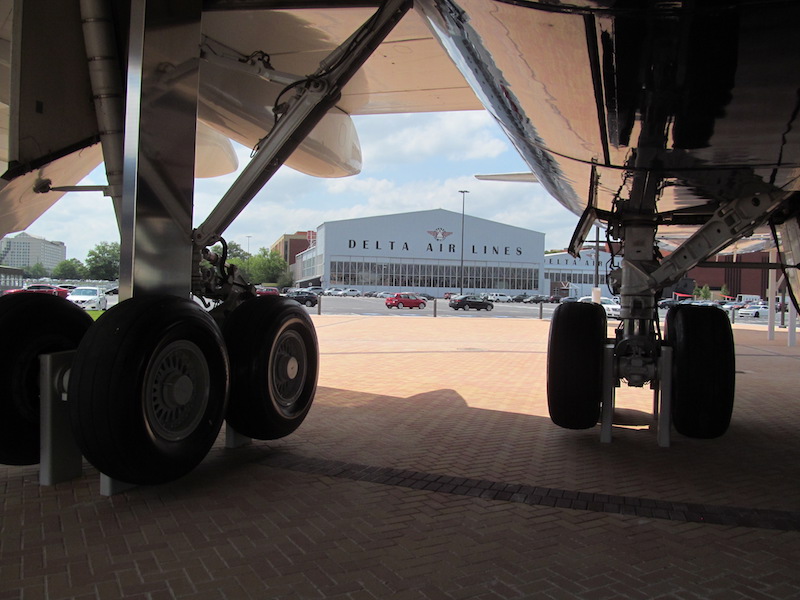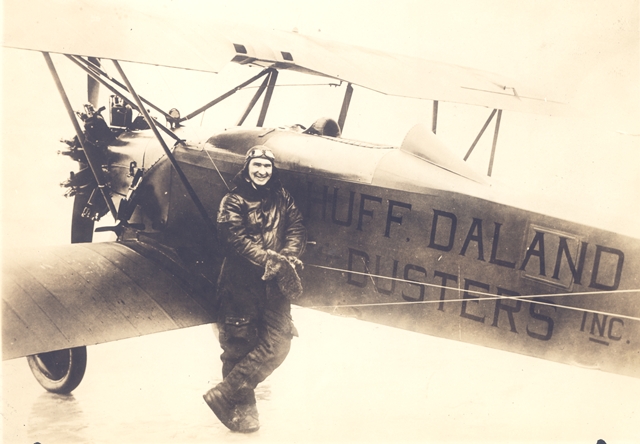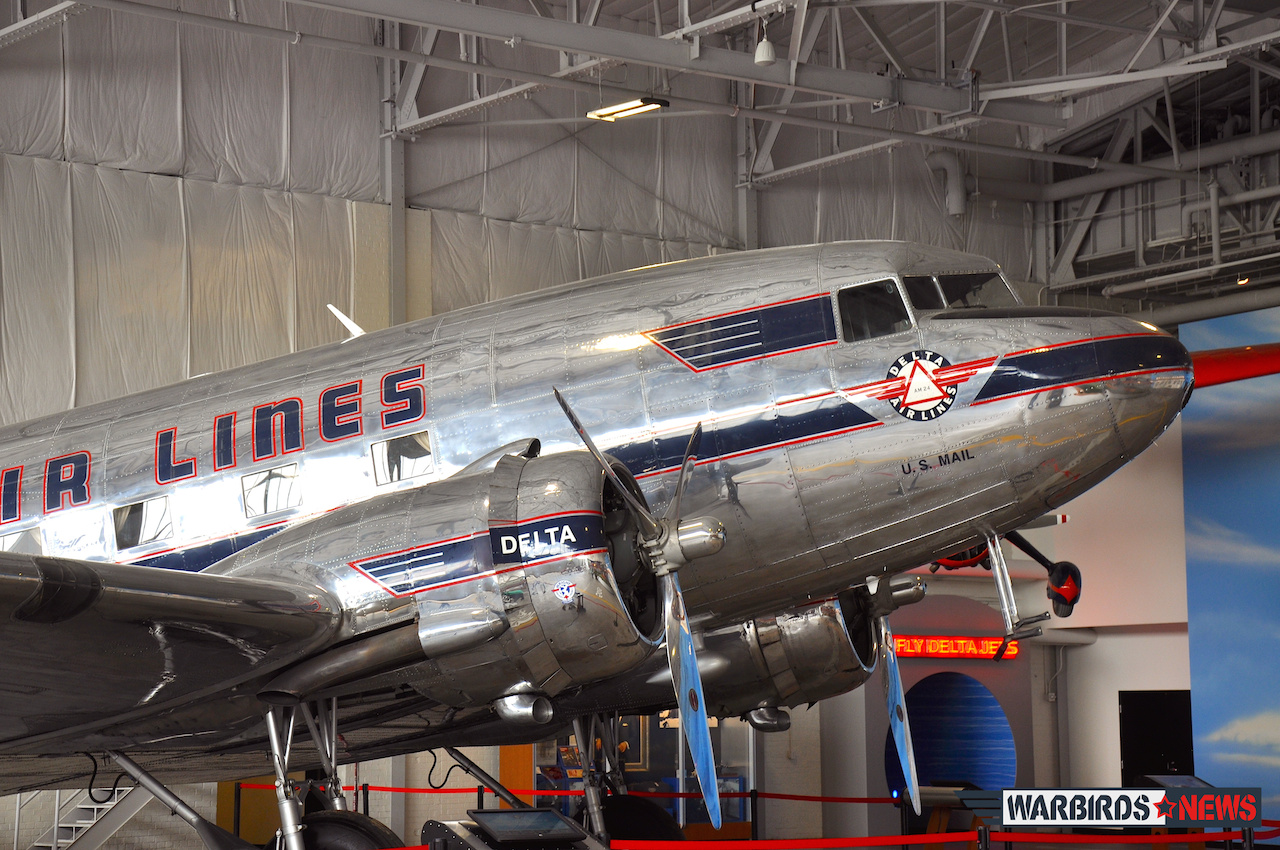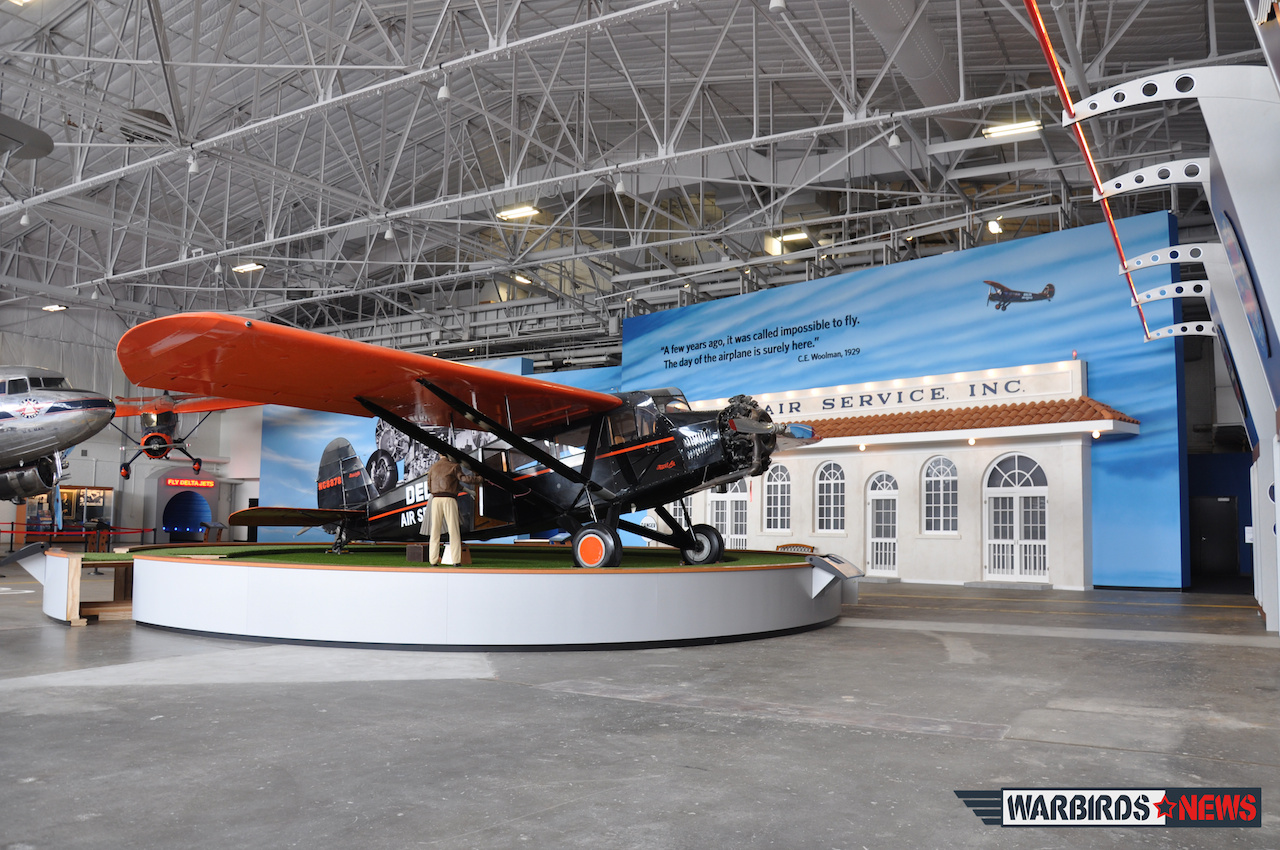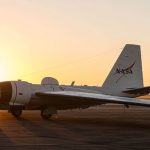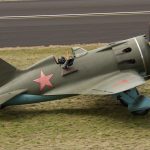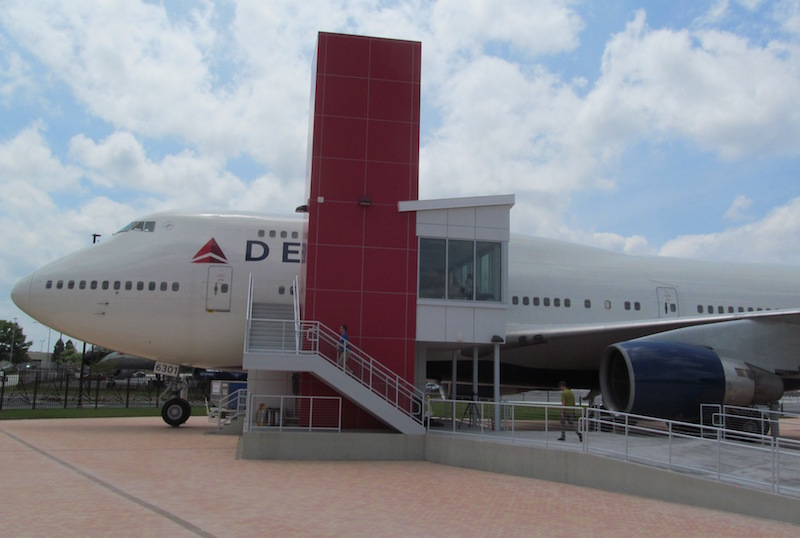
By Marty Steiner via General Aviation News
Airline museums range from boring glass cases filled with a hodgepodge of miscellaneous stuff to a flight line of vintage airliners in varying states of outdoor exposure and decay. Some have brought an aircraft or two indoors, restored it and may have some limited viewing or even a walk-thru tour or display. Faced with the dilemma of where to place the first built commercial Boeing 747-400 upon its retirement the Delta Flight Museum decided to put the displays inside the aircraft and to expose portions of the aircraft never seen even by many seasoned airline employees.
Ship 6301 is located outside and across the ramp from the main museum which is housed in a pair of 1940s original Delta hangars, overlooking the air cargo terminals and adjacent to Atlanta’s massive Hartsfield-Jackson International Airport, “the world’s busiest”. The 747 was moved there on April 30, 2016, prior to the installation of the displays and various modifications to ready it for viewing. This was thirty years, almost to the day of its first flight. Access structures and an “over the wing” viewing platform were constructed and “see-thru” floor panels installed to enable visitors to see the myriads of wire and other systems that are the guts of a modern jet air transport.
Highlights, in addition to the “see-thru” panels include streaming historic videos, timelines of the 747 design and more. It’s like walking through a full size cutaway!
Ship 6301, the first Boeing 747-400 built, originally took flight on April 29, 1988. The “747 Experience” featuring this historic aircraft took flight at the Delta Flight Museum in Atlanta Georgia on March 28, 2017. With special opening day ticket prices of $7.47, visitors went airborne the 30 feet to the aircraft main deck.
This historic aircraft came to Delta through its merger with Northwest Airlines in 2008. Delta had previously operated 747s from 1970 to 1977. This came about after Delta had already decided that the Lockheed L-1011 Tristar was to be their standard, and only, wide-body aircraft. Lockheed and the Rolls-Royce jet engines fell on hard times and with market demands Delta needed a wide body airliner before any Tristars could be delivered. They also operated a few leased DC-10 aircraft in the interim.
While the “747 Experience” is the latest addition to the museum it is only one creative presentation of Delta’s eighty-eight year history. That story is housed in the two nearby hangars. The first presents the propeller age of Delta and many of its predecessor airlines. Perhaps to put the “747 Experience” in perspective, visitors might begin their museum visit in these main hangar buildings.
Delta began as a crop dusting operation in the Louisiana delta region, giving it its name. The Huff-Daland fabric-covered aircraft was the first to bear the Delta Air Service logo. A replica of a Huff Daland “Puffer” which originally distributed powder (dust) insecticide to eradicate the boll weevil from cotton fields is suspended in “flight” over a display of that cotton dusting history. This replica was built from original aircraft plans by a team of retired Delta employees. A restored original Huff Daland aircraft was previously donated to the National Air and Space Museum by Delta in 1968.
Nearby a Travel Air 6B Sedan poses in front of a mockup façade of the original Delta terminal in Monroe, Louisiana, its birthplace. A mannequin pilot is assisting a lady passenger aboard, both in vintage clothing. Nearby Delta’s first DC-3, ship 41, stands proudly. Both of these aircraft are airworthy and previously had been flown to airshows and other special events until permanently moved into the museum.
Ship 41 was one of five Douglas DC-3s ordered by Delta in 1940 and was the first to see passenger service on Christmas Eve 1940. Later sold to North Central, then becoming Northwest and eventually used for air cargo in Puerto Rico, she was purchased for restoration and a home in the Delta Flight Museum. Glass cases line the walls with specific focused exhibits. Some focus on a specific airline and others on various operational aspects such as navigation. Younger visitors have opportunities in this museum as well. A scale replica of a Western Air Express Boeing biplane flown in the 1920s and 1930s offers a photo op (or selfie) while a variety of youth focused activities are available.
Visitors then traverse a jetway tunnel lined with blue runway lights into Hangar 2 for the jet age exhibits. Both of these hangars were in daily use well into the 1960s before the massive Delta Tech-Ops complex was completed simultaneous with the “new” Atlanta International Airport Terminal which opened in May of 1961. Displayed on the centerline of Hangar 2 is “the Spirit of Delta”, the Boeing 767 that was purchased for Delta by its employees as a show of faith after Delta suffered its first annual loss in its entire history. Under the 767 are two baggage cart trains with each baggage cart creatively converted in exhibits/displays, each side with a different subject.
Many of these exhibits contain uniforms, china and flatware, schedule folders, tote bags, and other items from the various airlines that have become part of Delta. Other specific aircraft types are also represented including the forward fuselage of the prototype Lockheed L-1011 Tristar and the cockpit of a Convair 880. One display contains a CE Woolman tribute exhibit. It contains a bronze bust, his original picture id badge, number 1 of course, various magazine covers that featured Woolman, as well as some of the honors awarded to Delta during his long tenure. Many of his encouraging quotes may be seen displayed throughout the museum. One particularly interesting interactive display shows the “family tree” of Delta and provides details on each of these colorful ancestors of Delta. Among these are some forty individual airlines !
The Delta Flight Museum is open Thursday through Tuesdays, 10 AM to 4:30 PM except Sunday Noon – 4:30 PM. With the main museum and the “747 Experience” being available for special events, visitors should check in advance for possible closures. Admission is charged with youth (5-17) $10, adults $15 and seniors (65+) $12.50. Youth activities are available including scavenger hunts. Guided tours of the museum are available on first, third and fifth Tuesdays at 1 PM and DC3 tours are available on the second Tuesdays at no additional cost. Boeing 737-200 flight simulator time may also be scheduled (fee applies). This may be the only commercial airline full motion simulator available to the general public.
Full details about the museum, special events and activities may be found at www.deltamuseum.org, email [email protected] or (404) 715-7886.
Whether your travels include Atlanta or you live in the area, the Delta Flight Museum is a world-class museum right next to the world’s busiest airport!
By Marty Steiner via General Aviation News
More photos…
[inpost_galleria thumb_width=”200″ thumb_height=”200″ post_id=”30580″ thumb_margin_left=”3″ thumb_margin_bottom=”0″ thumb_border_radius=”2″ thumb_shadow=”0 1px 4px rgba(0, 0, 0, 0.2)” id=”” random=”0″ group=”0″ border=”” show_in_popup=”0″ album_cover=”” album_cover_width=”200″ album_cover_height=”200″ popup_width=”800″ popup_max_height=”600″ popup_title=”Gallery” type=”yoxview” sc_id=”sc1503275420044″]








